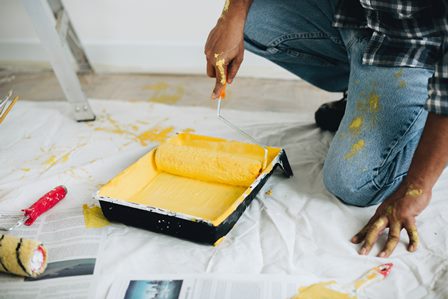
Three times this week I had to de-brief clients who had gotten incorrect color advice for their homes either from the Internet or from a previous consultant. Naturally, it inspired this article where I will go over how a classical Feng Shui audit determines the best and worst colors to use.
I should mention that many practitioners acknowledge that colors do not wield anywhere near the real power of actual elements. For example, blue and black color might resonate with the water element, but these colors can’t compete with real water when needed.
There are also many practitioners who are not at all aware of how Five Element Theory plays into color choices and they simply rely on the New Age version of Feng Shui which is heavily laden with Western Color Psychology notions. For example, many will say that if a woman wants to attract love in her life that she should have pink color in her bedroom. While I do believe that colors can affect us emotionally and pink tends to soften one’s perception of the person wearing pink color, I don’t think that this practice can work on any other level than as a placebo.
Another incorrect assumption is that red is a “power” color. Red color might increase appetite, but it is not necessarily a color to use when you want to be more commanding at work or increase financial luck. In fact, red color in the wrong location can promote arguments, accidents and even serious health issues.
There is one very popular, but overly simplified way of choosing colors and it is derived from the inherent elements associated with the eight basic directions. As an example, the direction of south is associated with the Fire element in the “Later Heaven” Sequence of the Luo Shu. Red color is associated with fire and therefore some people are under the impression that the south sector of a floor plan needs red color. This is such a generic way of relating to Eight Trigram Theory that it is a dangerous premise to base important decisions on.
One of my clients this week thought she should paint her son’s bedroom yellow since the room is in the northeast sector of the house. She forgot why I had recommended another color. It is true that the direction of Northeast resonates some of the earth element and earth colors include yellow and brown. But I repeated to her that there is a lot more going on with that part of her house than the singular identification of it being in the Northeast. Another client thought she should only use green color in her east kitchen because east is inherently related to the Wood phase and wood colors are any shades of green.
There is a hierarchy in determining the best color and initially we should be comparing the relationship between two non-obvious energies in a room. Each directional sector of a house has an energy field which was created when the house was built and in combination with its orientation. The verbiage we use in classical Feng Shui to describe these forces of magnetism are “mountain star” and “water star.” These energies receive numerical coding, but we refer to the numbers as “stars.” These stars are also related to the stars of the Big Dipper, as Feng Shui principles originate directly from astronomy.
If we have a conflict between the two energies, a third energy can be introduced to mitigate the imbalance. The real element is ideal, but color can also be used as back-up reinforcement. For example, let’s say a person’s bedroom is a combination of metal and fire (non-obvious but can be calculated). This is a clash which could produce head or lung problems. In Five Element Theory, earth will draw energy away from fire and hand it over to metal, strengthening it. A real earthen object, like something made of clay or marble could work in the room. And an earth color like yellow or brown could be added for good measure. This could be the case whether the location is the northwest or the south or any direction of the floor plan. Of course, the element associated with the direction can have another subtle layer of influence, but first we have to resolve a clash between the energies derived from year built and orientation of the whole house.
This might seem complicated and many will still gravitate toward easy answers and what I call “Top Ten” Do’s and Don’t lists. But Feng Shui is much more individualized and sophisticated than the average person is aware of. By delving into Xuan Kong Fei Xing, (Flying Star School) one can learn about these principles of energy that are reliant on time and space.
It goes without saying that a person should not feel forced to use a color that they do not like, just based on the recommendations for Feng Shui. We can’t ignore personal preference since many people have subjective, but real aversions to certain colors. The good news is that there are so many color choices available that we can find a happy alternative for just about any person or place.
Author: Kartar Diamond
Company: Feng Shui Solutions (R)
From the Architecture & Design Series
